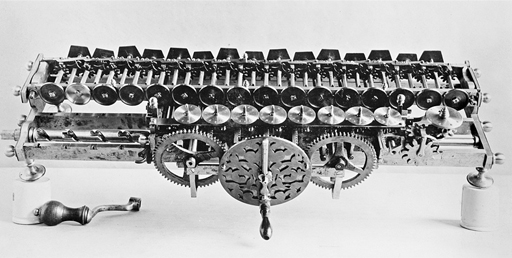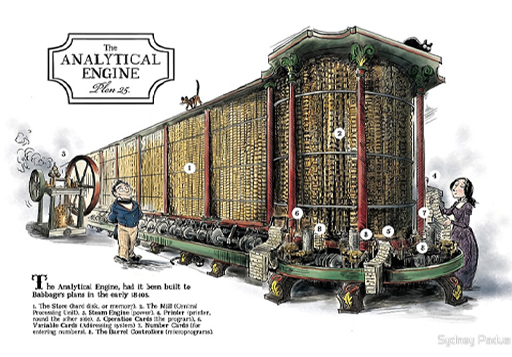2 The limits of computation
Leibniz went on to construct a mechanical device that automates multiplication (Figure 6). The development of a device that might deal with concepts and thoughts, rather than numbers, had to wait for another 150 years or so. Around 1840, the English polymath Charles Babbage (1791–1871) designed such a machine called the analytical engine (Figure 7).
The analytical engine was never built. But Babbage’s fellow mathematician Augusta Ada King (1815–1852), the Countess of Lovelace (also known as Ada Lovelace), saw its potential for tasks beyond straightforward number crunching:
The operating mechanism can even be thrown into action independently of any object to operate upon (although of course no result could then be developed). Again, it might act upon other things besides number, were objects found whose mutual fundamental relations could be expressed by those of the abstract science of operations, and which should be also susceptible of adaptations to the action of the operating notation and mechanism of the engine. Supposing, for instance, that the fundamental relations of pitched sounds in the science of harmony and of musical composition were susceptible of such expression and adaptations, the engine might compose elaborate and scientific pieces of music of any degree of complexity or extent.
It wasn’t until the 20th century that general-purpose digital computers were built and started the information age.


